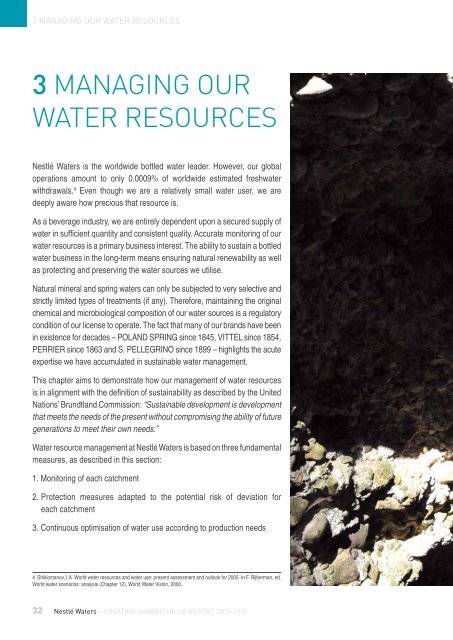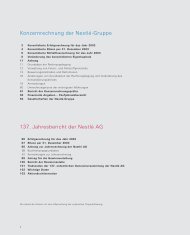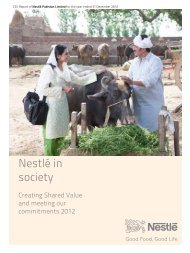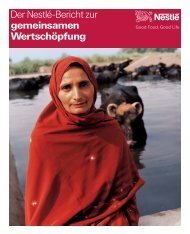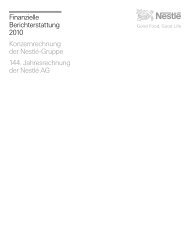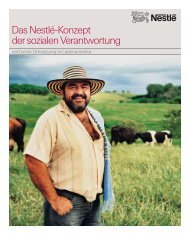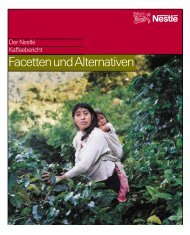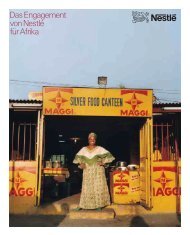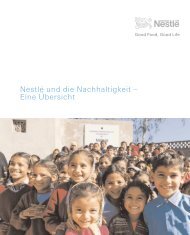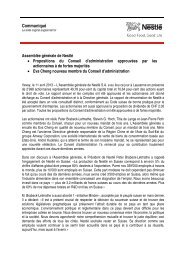Nestlé Waters – Creating Shared Value report
Nestlé Waters – Creating Shared Value report
Nestlé Waters – Creating Shared Value report
You also want an ePaper? Increase the reach of your titles
YUMPU automatically turns print PDFs into web optimized ePapers that Google loves.
3 Managing our water resources<br />
3 Managing our<br />
water resources<br />
<strong>Nestlé</strong> <strong>Waters</strong> is the worldwide bottled water leader. However, our global<br />
operations amount to only 0.0009% of worldwide estimated freshwater<br />
withdrawals. 4 Even though we are a relatively small water user, we are<br />
deeply aware how precious that resource is.<br />
As a beverage industry, we are entirely dependent upon a secured supply of<br />
water in sufficient quantity and consistent quality. Accurate monitoring of our<br />
water resources is a primary business interest. The ability to sustain a bottled<br />
water business in the long-term means ensuring natural renewability as well<br />
as protecting and preserving the water sources we utilise.<br />
Natural mineral and spring waters can only be subjected to very selective and<br />
strictly limited types of treatments (if any). Therefore, maintaining the original<br />
chemical and microbiological composition of our water sources is a regulatory<br />
condition of our license to operate. The fact that many of our brands have been<br />
in existence for decades <strong>–</strong> POLAND SPRING since 1845, VITTEL since 1854,<br />
PERRIER since 1863 and S. PELLEGRINO since 1899 <strong>–</strong> highlights the acute<br />
expertise we have accumulated in sustainable water management.<br />
This chapter aims to demonstrate how our management of water resources<br />
is in alignment with the definition of sustainability as described by the United<br />
Nations’ Brundtland Commission: “Sustainable development is development<br />
that meets the needs of the present without compromising the ability of future<br />
generations to meet their own needs.”<br />
Water resource management at <strong>Nestlé</strong> <strong>Waters</strong> is based on three fundamental<br />
measures, as described in this section:<br />
1. Monitoring of each catchment<br />
2. Protection measures adapted to the potential risk of deviation for<br />
each catchment<br />
3. Continuous optimisation of water use according to production needs<br />
4 Shiklomanov, I.A. World water resources and water use: present assessment and outlook for 2005. In F. Rijberman, ed.<br />
World water scenarios: analysis (Chapter 12), World Water Vision, 2000.<br />
32<br />
<strong>Nestlé</strong> <strong>Waters</strong> <strong>–</strong> creating shared <strong>Value</strong> <strong>report</strong> 2005-2010


